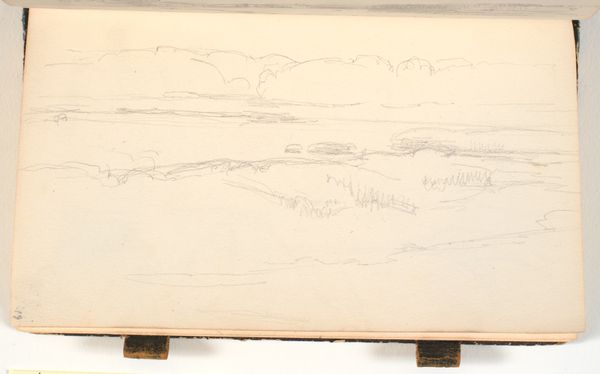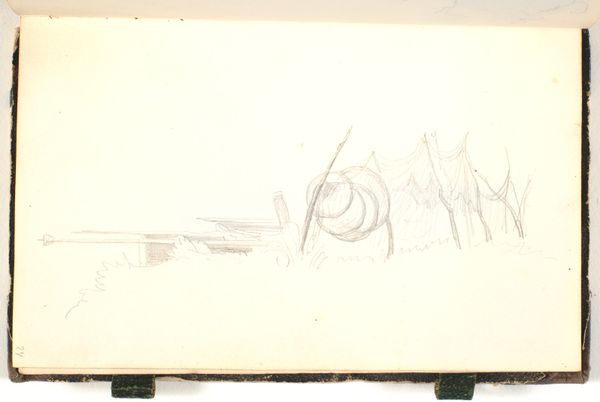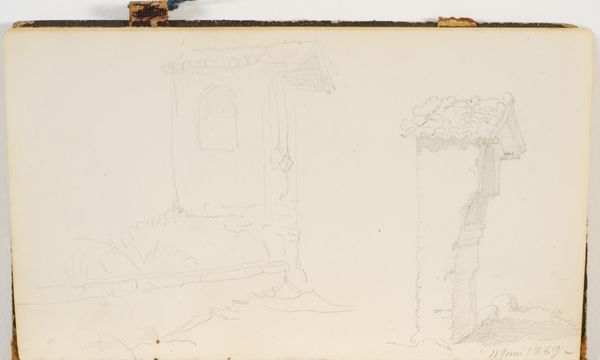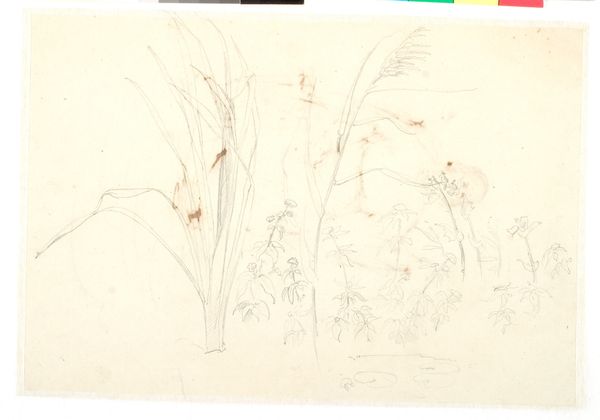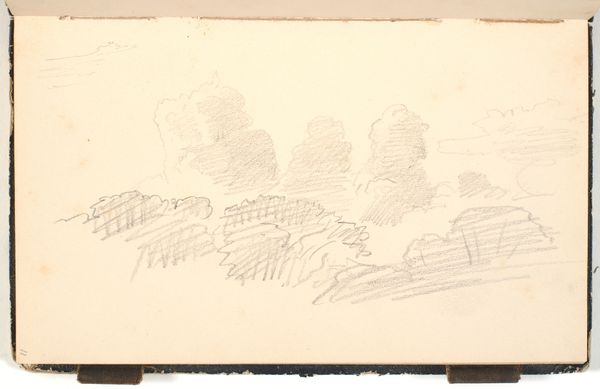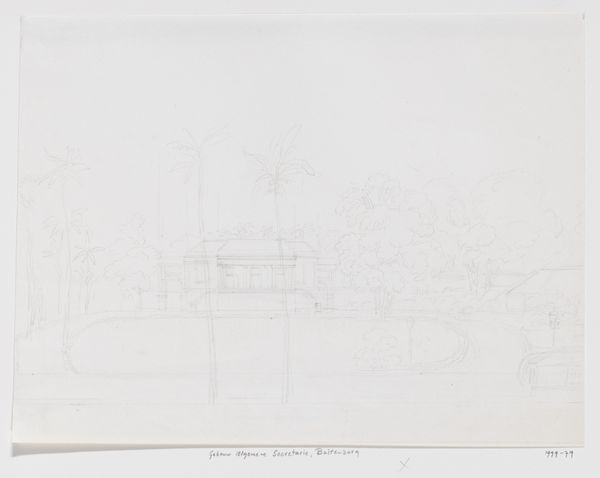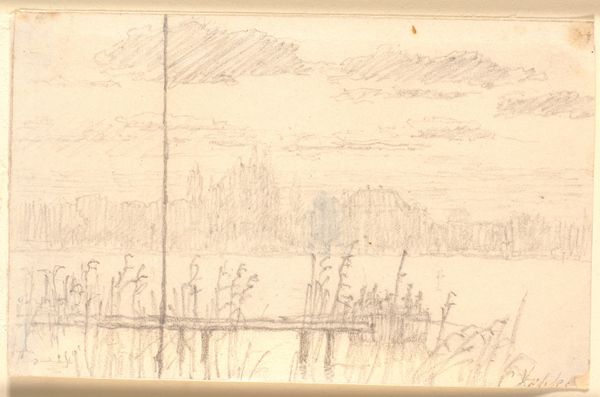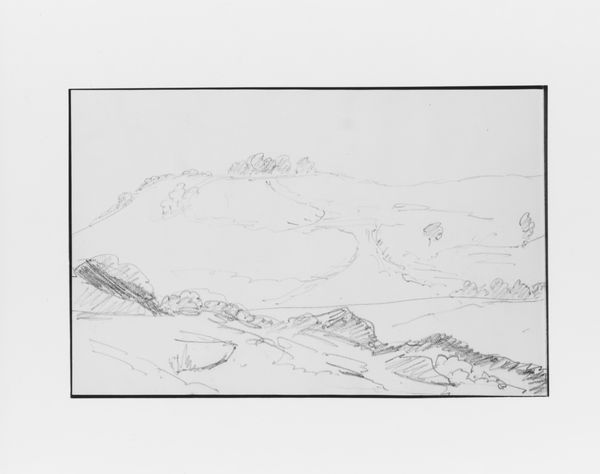
drawing, pencil
#
drawing
#
16_19th-century
#
landscape
#
pencil
#
realism
Dimensions: 163 mm (height) x 100 mm (width) (bladmaal)
Curator: Welcome. Here we see "A Landscape with Two Trees, a Mill and Some Cows", rendered in pencil by P.C. Skovgaard around 1865. This engaging drawing can be found here at the SMK, Denmark's National Gallery. Editor: Immediately, there's something so incredibly delicate and understated about this drawing. It's barely there! So simple, a casual moment captured, almost ephemeral. Curator: Indeed. Skovgaard was pivotal in establishing a distinctly Danish national landscape painting tradition, a crucial aspect of nation-building and identity formation in the 19th century. These landscape scenes were so powerful in capturing an ideal version of a country. Editor: This does feel particularly pastoral and idealized. You have these cows and the little windmill. There’s a definite sense of harmony between humankind and nature; the kind of sentiment very prevalent throughout landscape artworks of the period. I imagine it would resonate quite powerfully. I suppose there would be the argument that landscape can carry strong ideologies. It's about claiming and possessing the territory and land. Curator: Absolutely. The choice of representing specific landscapes contributes to a narrative about what constitutes the "true" or "ideal" nation. In this period, landscape painting academies had real political influence, and were used to promote dominant cultural ideas. There's so much to unpack when understanding why certain art movements happen and which ones get funded. Editor: You mention dominant culture, and of course, that lens invites a critical look at whose experiences are prioritized. These serene rural scenes rarely depict the realities of land ownership, class divides, or even just the labor that shaped those landscapes. Whose perspective is being presented here? Curator: That's exactly it. Skovgaard offers an interpretation – one steeped in the cultural values of his time. Examining these works critically allows us to unravel the complex layers of meaning embedded within seemingly straightforward representations. We can analyze what values this drawing emphasizes, what social relationships does this depict and what might have been purposefully left out to deliver a version of his truth. Editor: It certainly inspires deeper reflection. I am just sitting here thinking about who really benefited from this romantic notion of the Danish countryside in the mid-19th century. Curator: Exactly! And by delving into the historical context and scrutinizing its underlying messages, we can foster a richer, more nuanced understanding of not only the artwork itself, but also the society from which it emerged. Editor: Well said! And hopefully by addressing the context that surrounds a work like this one, it prompts further conversations that have critical meaning.
Comments
No comments
Be the first to comment and join the conversation on the ultimate creative platform.

